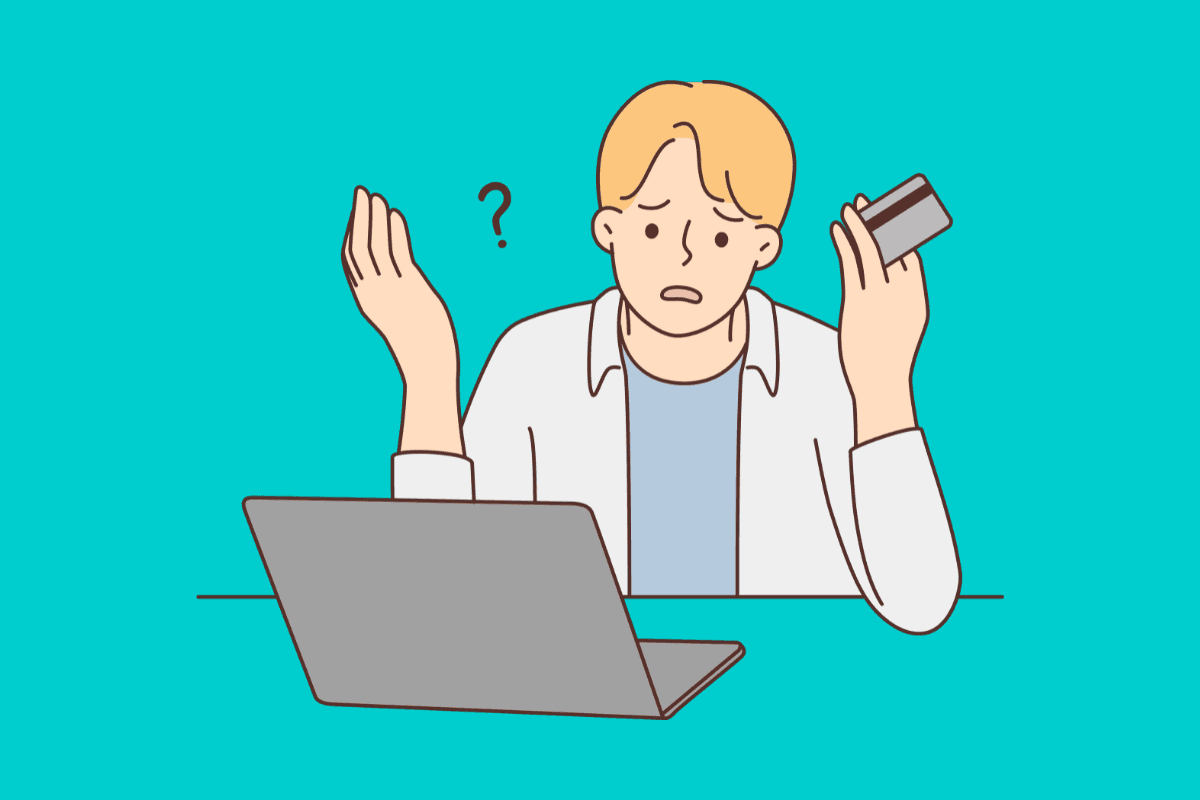Want To Pay Off Your Credit Cards? Here Are 12 Strategies To Help You Clear Them Quickly
By Arthur Dubois | Published on 26 Jul 2023

Credit cards have become the default payment option for many people, with them being used to purchase everything from family holidays to weekly groceries. If you manage them properly, credit cards are an excellent financial tool that you can use to earn perks such as travel points, cashback, or insurance protection.
However, carrying forward a balance on your credit card changes your situation considerably. Interest charged on unpaid credit card balances is incredibly high, according to the Credit Counselling Society. Typical interest charges can be more than 20%, and at these rates, even a modest unpaid balance can soon grow out of control.
For this reason, your top priority, if you are carrying forward a balance on your credit card, is to get it paid off as soon as possible. This article aims to give you twelve strategies to help clear your credit cards quickly.
1. Create a Budget
The best way to get a grip on your spending is to produce a budget and stick to it. That might sound easier to say than to do for a lot of people. If you are one of these, fear not, there are plenty of apps available to help you with your budgeting, including one we recommend from Hardbacon. There are also free budgeting templates available, and you can find some at the Credit Counselling Society site.
When developing a budget, you need to record your income and expenses and find out where most of your spending is going. You can then decide whether you need to maintain that level of expenditure or whether you reduce it, find a cheaper supplier, or cut it out altogether. Go through each one of your expenses, line by line, and item by item.
You may be surprised at just how much you can cut back on, leaving yourself with some extra cash at the end of the month. Don’t get carried away, and look at treating yourself, though. Remember that this extra cash is to pay off your credit card balances. Any treats you want to give yourself can wait until you’re in the clear on your cards.
2. Examine Your Impulse Spending Habits
Developing a budget will account for all of the spending that you make regularly. However, a typical budget will only account for around 75-80% of your total spending. It is relatively straightforward to account for this lion’s share of your spending, but the other 20-25% is not quite so easy to track.
The remainder might go on what you can class as impulse purchases. These are the thighs that you didn’t set out to buy or money you didn’t plan on spending. You could make impulse spends on things like a round of drinks for your friends, an extra coffee during the day, or some online purchases that you never thought you’d make.
It is easy to fall into the trap of this kind of spending. However, having a budget with strict limits set against your spending categories will help reduce it or eliminate it altogether, leaving you more cash with which to clear your cards.
3. Don’t Merely Pay The Minimum Required Payment.
Paying the minimum required payment on your monthly credit card balance equates to around 2% of the total. However, most of this amount goes to paying off the interest that you have accrued during the month, rather than the principal amount of credit.
Adopting this payment method means that it will take you an incredibly long time to pay off your debt, and the interest keeps accumulating while there is an outstanding balance. You should aim to pay off as much of your credit card balance as you can each month. Any amount above the minimum amount is better in the long run, but you should also be realistic in the amount you set yourself to repay and show consistency in paying it.
4. Negotiate A Better Interest Rate
You might not be aware of it, but there is a possibility of you renegotiating your interest rate with your credit card provider. If you are struggling to make your payments, it is in the credit card company’s best interest to help you out. The amount they lose in a couple of percentage points reduction in your interest rate is nothing compared to what they’ll lose if you default on the payments.
There are a couple of things that will help you renegotiate your interest rate. Firstly, if you are a long-term customer of the company and have not been in a similar position before, you can claim extenuating circumstances. In this situation, it is good to have a copy of your credit score and report so that you can demonstrate your previous payment record.
The other thing to do is research other credit cards and determine what interest rates they offer to new customers. Doing this research will put you in a stronger position to ask for a discounted rate, as you can quote companies offering the same interest. You can do a comparison of credit card interest rates online using a variety of different applications. One such app is the Hardbacon credit card comparison tool.
5. Use a Balance Transfer Promotion
When you are researching the interest rates that other credit card companies are offering, you may well come across various balance transfer promotions. These promotions offer you a low-interest rate when you transfer your balance from your existing credit card onto a new supplier. Rates typically range between 0-1.99% and are valid for between 6-12 months.
If you do take advantage of a balance transfer, you should aim to pay off all, or as much as possible, of your outstanding balance during the low-interest period. There is usually a fee involved in transferring your balance, so you should take this into consideration. Also, remember that once your low-interest period has expired, you will be back on a similar interest rate as you were previously.
6. Switch to a Lower-Interest Card
During the process of developing your budget and assessing your spending habits, you might conclude that you will be carrying a balance forward on a regular basis. If this is the case, you should consider changing your existing credit card to a low-interest credit card. There are few if any perks with these cards, but their benefit comes from the reduced interest you pay on your outstanding balance. You can get an idea of the level of interest rates you could pay using the Hardbacon credit card comparison tool.
7. Use the Avalanche Repayment Method
If you have debt from several creditors, you might want to consider the avalanche repayment method. This method concentrates on clearing the debt with the highest interest rates first. Once these have been cleared, you then move on to the next highest debt, reducing the interest payments with each debt you clear.
8. Use the Debt Snowball Method
The snowball method of repaying your debts is the opposite of the avalanche method. Clearing the smallest debts first gives you a ‘quick win’ by clearing some debts quickly. Some people get daunted by clearing a large debt first, so this method might suit you if this is the case for you. Clearing small debts will set a good habit for clearing the larger ones later on.
9. Should You Pay Off Your Credit Cards Before Investing In Anything Else?
Deciding whether to hold off on your investments until you have cleared your credit card debt can be a tricky decision to make. On the one hand, any profits you make on your investments might get wiped out by the interest you will pay on your credit cards. However, investing is a long-term activity, particularly if you are investing for your retirement. So, the sooner you get started investing, the better. Ultimately, it is your decision to make regarding whether you should hold off investing until you have paid off your credit cards.
10. Use Cash Rather Than Your Credit Cards
As we’ve already acknowledged, credit cards are a useful and beneficial financial tool if used responsibly. However, if you are carrying forward balances every month, you might want to consider using cash for everything but emergency payments.
You should also consider reducing the number of credit cards you use, perhaps restricting your card spending to a single, low-interest card. Regardless of the number of credit cards you have, or their interest rates, you should not use them unless you have sufficient funds in your bank to pay for the purchases.
11. Consider a Debt Consolidation Loan
You can only clear your debt in two ways; paying it off as fast as possible and replacing your existing debt with credit at a better interest rate. You can get your debt onto a better interest rate by taking out a debt consolidation loan.
The main benefit of a debt consolidation loan is that it is likely to have a lower interest rate than a credit card. This lower interest rate means that you can pay off more of your principal amount with a consolidation loan than you can with credit card debt. Paying off more of your principal loan amount each month will clear your debt quicker, reducing the overall amount you pay.
12. Sell Off Investments To Clear Your Debt
Deciding to sell some of your investments to clear your credit card debts will depend on the interest rate you are paying on your card balance compared to the interest you gain from your investment. For instance, if your credit card charges 20% and you are only making 6% on your investment, it might be the right decision to cash-in your investment to pay off your debt.
Of course, this is a simple example to use. In reality, you are likely to have investments in different securities and different registered accounts. If you decide to sell off some of your investments to pay your credit card debts, you should consider the ones that provide you with the lowest returns and the one that have the least tax implications. While selling off investments held in a TFSA might make sense in some cases, selling off investments held in a RRSP is more tricky, since the tax bill associated with such a move might be pricey.
Selling off an investment to clear high-interest credit card debt is one thing. However, this principle should not be applied to all your debt. For instance, if you have a mortgage, this will have a low-interest rate applied to it, so selling off an investment to repay this may not be a good financial decision.
Credit cards have become an essential part of many people’s lives. However, the convenience, flexibility, and other benefits they provide can soon be wiped out if you find yourself paying a high level of interest on outstanding balances.
Minimizing the time it takes you to clear your credit card debt or reducing the interest rate you pay on your outstanding balance are the two methods of cutting the debt you have quickly. Each one of the tips laid out above helps you achieve one of these two debt-reducing methods.
It’s not easy to regain control of your financial life, but these strategies can help you. Paying off your outstanding balance at the end of each month is a good practice to get into. If you do find yourself carrying forward a balance on your credit card, you should aim to get it paid off as soon as possible. Hopefully, the twelve tips laid out in the article will help you clear your credit card quickly, so you can get back to enjoying the benefits without the high payments.
